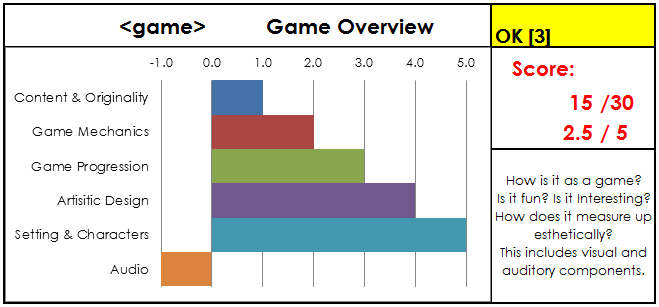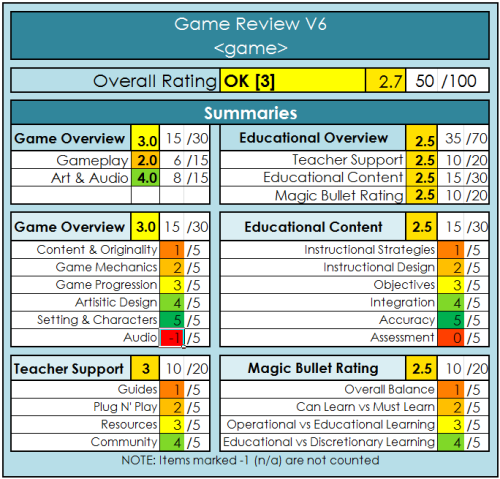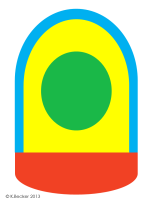Game Review of MathBlaster
Note: This template is copyright K.Becker and may not be used without her written permission.

| Game: | Mathblaster | Audience: | School & Homeschool | |
|---|---|---|---|---|
| Publisher: | Davidson & Associates, Inc. | Subject: | Math | |
| Developer: | Knowledge Adventure Company | Grade(s): | G1-6 | |
| Release: | 1987, 1990, 1993, 1996, 1999, 2006, 2010 | Platform: | Multiple (iPad reviewed) | |
| Genre: | Side-Scrolling Platformer | Cost: | $2.99 + in-game purchases | |
| Perspective: | Full Shot, Eye Level View | Date of Review | May 13 2015 | |
Description
An educational “action” game that can teach math to children from grades 1 through 6. Students can practice addition, subtraction, multiplication, and division. Another level, for fractions/percents/decimals contains 5 sub-levels teaching reduction of common fractions, renaming improper fractions, renaming common fractions to decimals, renaming decimals as percents, and renaming percents as fractions. Math problems can be displayed in either horizontal or vertical display, depending on preference.
Gameplay takes place on a screen with multiple answers to a problem ranged across the top of the screen, and a series of cannons below. You must move your character to the cannon aimed at the correct answer. There are 2 timers going- a seal bouncing a ball represents the time available to answer a given problem; a balloon descending towards a needle represents time left for the overall game. The speed can be adjusted for players' skill levels.
Finally, an editor is included for parents/teachers to create their own lessons featuring particular problems.
Screenshots
Summary
Detailed Review
Gameplay, Art & Audio
 How is it as a game? Is it fun? Is it Interesting?
How is it as a game? Is it fun? Is it Interesting?
How does it measure up esthetically? This includes visual and auditory components.
|
Content & Originality |
|
|
Game Mechanics. |
|
|
Game Progression. |
|
|
Artistic Design |
|
|
Set, Settings, Characters & Costumes |
|
|
Audio |
|
Teacher Support
 Is there adequate teacher support to make viable for use in a formal setting?
Is there adequate teacher support to make viable for use in a formal setting?
|
Plug and Play |
|
|
Supplementary resources |
|
|
A community |
|
Educational Content
 How well does it appear to deliver on its educational objectives?
(This is is an analysis performed without user studies, so it is not possible to verify this here. That is left to other methodologies.)
How well does it appear to deliver on its educational objectives?
(This is is an analysis performed without user studies, so it is not possible to verify this here. That is left to other methodologies.)
|
Instructional Design Is the design in keeping with Merrill's 1st Principles of Instruction? Each principle is assessed pass/fail, and the score is the sum. |
|
|
Assessment |
|
Where possible, links to studies using this game in educational settings are listed and studies cited.
Magic Bullet Assessment
 How does it fare when viewed through the lens of the Magic Bullet Model?
How does it fare when viewed through the lens of the Magic Bullet Model?
This section examines the game through the lens of the Magic Bullet model to see how well the various learning elements are balanced. This looks at both the overall balance and the educational components
|
Bullet Class
For a more detailed explanation, see: Magic Bullet Assessment |
In each of these categories the rating is determined by how well the balance of the elements fits the type of game it is, its intended use and audience.
|
Overall Balance |
|
|
Can vs. Must |
|
|
Operational vs Educational |
|
|
Educational vs Discretionary |
General explanation goes here.
Instructional Strategies
Not Scored
What instructional strategies does it use?
Presumably, the primary instructional strategy is Concept Formation through Discovery
Drill & Practice
Multiple Choice ONLY
There's a great list <HERE> (Kelly Jo Rowan) and <HERE> (Saskatoon Public Schools) as well as HERE at the Survival Guide for Teachers Site
Theoretical Underpinnings
Not Scored
What theories, models, or principles were used in the design of this game? For each theory checked, include a brief explanation.


I'm building a list of theories and principles here.


